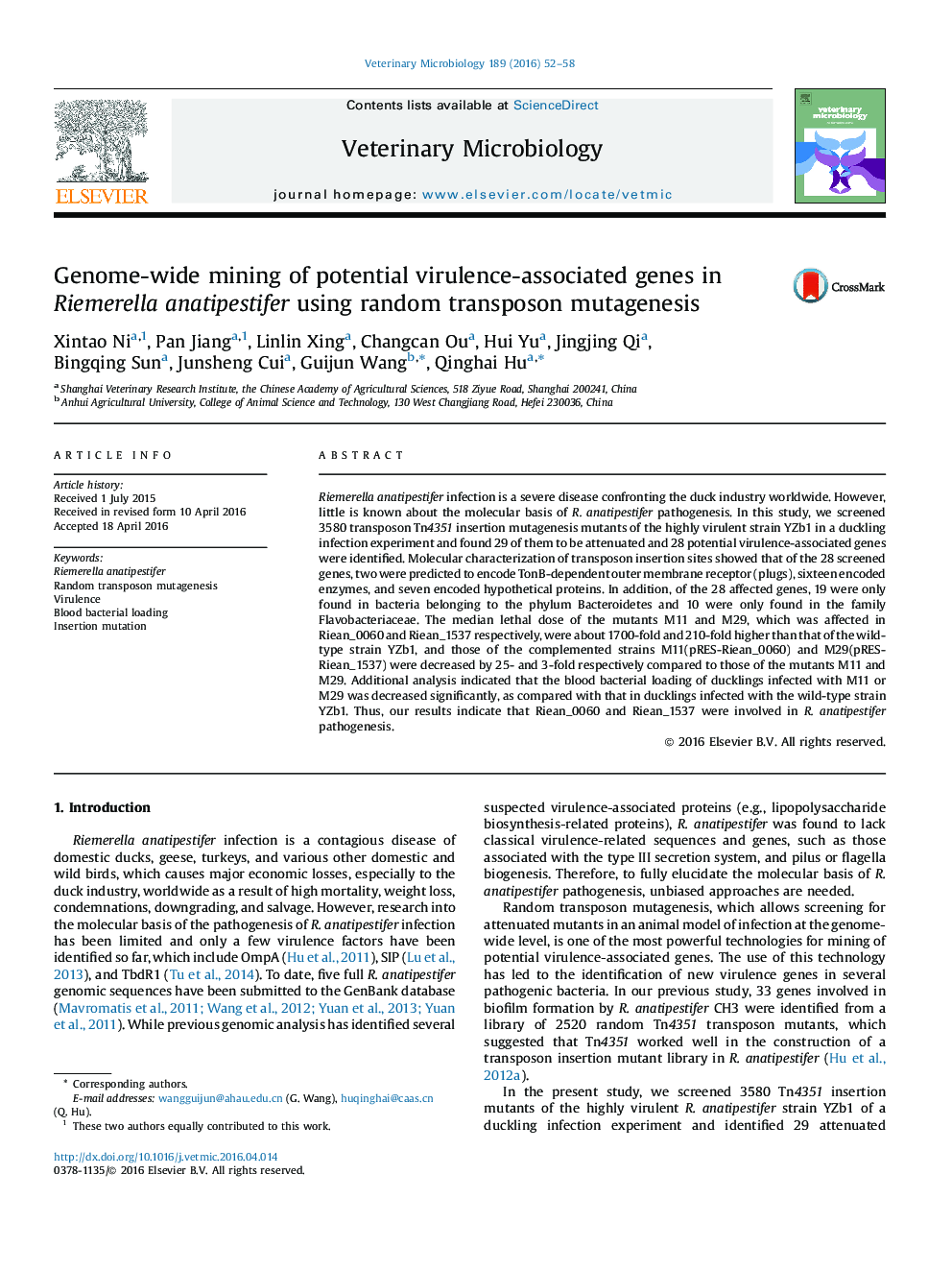| Article ID | Journal | Published Year | Pages | File Type |
|---|---|---|---|---|
| 5799676 | Veterinary Microbiology | 2016 | 7 Pages |
â¢28 potential virulence genes were identified from R. anatipestifer YZb1 using random transposon mutagenesis.â¢10 out of 28 genes were only found in the family Flavobacteriaceae.â¢Riean_0060 and Riean_1537 were involved in R. anatipestifer pathogenesis.
Riemerella anatipestifer infection is a severe disease confronting the duck industry worldwide. However, little is known about the molecular basis of R. anatipestifer pathogenesis. In this study, we screened 3580 transposon Tn4351 insertion mutagenesis mutants of the highly virulent strain YZb1 in a duckling infection experiment and found 29 of them to be attenuated and 28 potential virulence-associated genes were identified. Molecular characterization of transposon insertion sites showed that of the 28 screened genes, two were predicted to encode TonB-dependent outer membrane receptor (plugs), sixteen encoded enzymes, and seven encoded hypothetical proteins. In addition, of the 28 affected genes, 19 were only found in bacteria belonging to the phylum Bacteroidetes and 10 were only found in the family Flavobacteriaceae. The median lethal dose of the mutants M11 and M29, which was affected in Riean_0060 and Riean_1537 respectively, were about 1700-fold and 210-fold higher than that of the wild-type strain YZb1, and those of the complemented strains M11(pRES-Riean_0060) and M29(pRES-Riean_1537) were decreased by 25- and 3-fold respectively compared to those of the mutants M11 and M29. Additional analysis indicated that the blood bacterial loading of ducklings infected with M11 or M29 was decreased significantly, as compared with that in ducklings infected with the wild-type strain YZb1. Thus, our results indicate that Riean_0060 and Riean_1537 were involved in R. anatipestifer pathogenesis.
